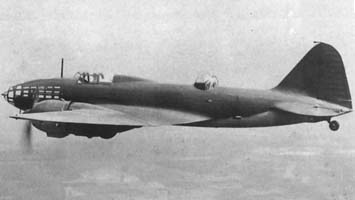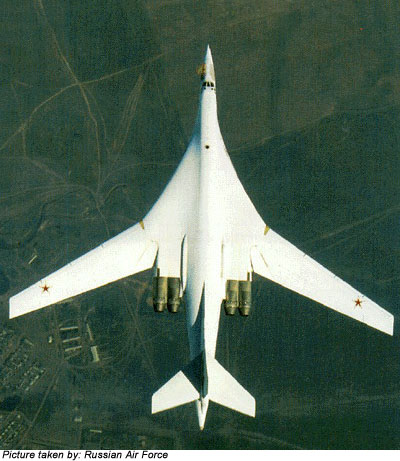Install the app
How to install the app on iOS
Follow along with the video below to see how to install our site as a web app on your home screen.
Nota: This feature may not be available in some browsers.
Je gebruikt een verouderde webbrowser. Het kan mogelijk deze of andere websites niet correct weergeven.
Het is raadzaam om je webbrowser te upgraden of een alternatieve webbrowser te gebruiken.
Het is raadzaam om je webbrowser te upgraden of een alternatieve webbrowser te gebruiken.
FORUMLEDEN met NOSTALGIE......"vreemde" kisten
- Topicstarter steffe
- Startdatum
- Status
- Niet open voor verdere reacties.
T
Theo Coenen
Guest
De volgende dan maar.




T
Theo Coenen
Guest
Alexander zei:was dat niet dat vliegtuig waar de as na het opstijgen onderuit viel, en die buiklandend moest landen (wat heel wat piloten en kisten heeft gekost?)
Niet alleen piloten... ook joodse proefkonijnen, die (vanuit strafkampen-jodenkampen) gedwongen in onderdrukkamers moesten verblijven tot de dood volgde... om proefondervindelijk vast te stellen aan welke onderdrukken mensen het loodje neerleggen. Dit, in't kader van de veiligheid van hun eigen piloten. Was deze week nog een reportage op Canvas over deze vreselijke materie. Ik was me er nooit van bewust.
J
jeroen1971
Guest
Heel erg Russisch zelfs, het is namelijk de LL.
Gezien de drie modelllen die ervan zijn gebouwd kan ik niet met zekerheid zeggen welke het is, maar de foto die van achteren is genomen lijkt een "forward swept wing" te hebben terwijl dat niet het geval is op de andere foto's.

The LL was a transonic aerodynamic testbed authorised by LII in September 1945. Three were built: the LL-1 with a straight wing; LL-2 with a conventional swept wing; and LL-3 with a forward swept wing. The LL was towed to a 6 km release altitude by a Tu-2 aircraft. After being cast off, it would fire its Kartukov solid rocket engine and accelerate to the edge of the sound barrier, with a camera photographing air flow on the tufted wing. The LL-2 was not finished because contemporary fighter programs were already providing data on swept wing configurations. But in 1946 to 1948 the LL-1 flew 30 times and the LL-3 100 times, with test pilots M Ivanov, Amet-Khan Sultan, Anokhin, and Rybko at the controls.
Crew Size: 1. Length: 8.98 m (29.46 ft). Span: 7.22 m (23.68 ft). Mass: 2,039 kg (4,495 lb). Main Engine: PRD-1500. Main Engine Thrust: 14.700 kN (3,305 lbf). Main Engine Propellants: Solid. Main Engine Propellants: 900 kg (1,980 lb).
Gezien de drie modelllen die ervan zijn gebouwd kan ik niet met zekerheid zeggen welke het is, maar de foto die van achteren is genomen lijkt een "forward swept wing" te hebben terwijl dat niet het geval is op de andere foto's.

J
jeroen1971
Guest
Dan zal ik maar een russische tegenhanger neerzetten :

Moet niet al te moeilijk zijn
Maar je hebt wel gelijk prop-er, die russen hebben heel wat vreemde en apparte toestellen het luchtruim ingeschoten.

Moet niet al te moeilijk zijn
Maar je hebt wel gelijk prop-er, die russen hebben heel wat vreemde en apparte toestellen het luchtruim ingeschoten.
prop-er
Forum veteraan

The Boeing B-9 was the first cantilever monoplane bomber to be produced for the US Army. The B-9 began life as the Boeing Models 214 and 215. These were company-funded new bomber designs that were based on the concepts developed by the Model 200 Monomail commercial mail carrier.
Both the Model 214 and the Model 215 were low-winged, all-metal cantilever monoplanes. The fuselage was of semi-monocoque construction, which permitted the use of a more nearly circular cross section. The main landing gear retraced rearward into the engine nacelles, but the lower halves of the wheels remained exposed.
Five crew members were carried--pilot, copilot, nose gunner/bombardier, rear gunner, and a radio operator. Four of the crew members sat in separate open cockpits, widely separated from each other. The bombardier/nose-gunner sat in a cockpit in the nose, which was equipped with a bomb sight and aiming window in the bottom and had a mount for a single flexible 0.30-inch machine gun around the top. Because the fuselage was so narrow, the pilot and copilot sat in separate tandem cockpits immediately behind the nose gunner. A fourth cockpit for a rear gunner was located on top of the fuselage behind the wing. He operated a single flexible 0.30-inch machine gun. The radio operator was located inside the fuselage just ahead of and below the pilot, and had a window on each side of the nose. Because of their wide separation, crew members had difficulty in communicating with each other in flight. The pilot had limited visibility because of the radial engines on each side and the long forward fuselage immediately ahead.
The radial-powered Model 215 was the first to be completed. It took to the air for the first time on April 12, 1931. Since it was a Boeing-owned airplane, it was painted in civilian colors and carried a civilian registration number (X-10633). It was initially powered by a pair of 575 hp Pratt & Whitney R-1830-13 commercial engines. It was tested by the Army on a bailment contract under the designation XB-901. It achieved a maximum speed of 163 mph at sea level.
The B-9 was a truly revolutionary design, and had a speed fully 60 percent greater than that of the Keystone biplane bombers that were still the backbone of the American bomber force in 1932. In war games held in May of 1933, the Y1B-9A could not be intercepted by six Boeing P-12 fighters, giving the USAAAC a bomber with a performance superior to that of its pursuit aircraft. In view of its superior performance, Boeing fully anticipated an Army order for substantial numbers of the new design. However, The Glenn L. Martin company in Baltimore, Maryland had in the meantime brought out a competing design of its own, the XB-907. The XB-907 was even more revolutionary than the XB-901. It was slightly larger than the XB-901 and had a substantially better performance. The Army decided to order the Martin design into production under the designation B-10 and B-12, and no production examples of the B-9 were ordered.
The service of the Y1B-9A was relative short, with all surviving examples being removed from service and surveyed in 1934. So far as I am aware, no examples of the B-9 survive today.
Ha die weet ik (als bootjesman), de B1 van Rockwell Int. USA.

Opvolger van de B52 en voorloper van de B2 Stealth. Paste in het inmiddels (gelukkig) verouderde plaatje waarbij de B1 met hoge snelheid (en onder de radar door) door het Russisch grondgebied kon binnendringen om daar zijn payload af te leveren. Kenmerkend zijn de swing-wings, net als de F14

Opvolger van de B52 en voorloper van de B2 Stealth. Paste in het inmiddels (gelukkig) verouderde plaatje waarbij de B1 met hoge snelheid (en onder de radar door) door het Russisch grondgebied kon binnendringen om daar zijn payload af te leveren. Kenmerkend zijn de swing-wings, net als de F14
Ga er even van uit dat de oplossing juist is.
Hoop dat deze nog niet geplaatst is....

Hoop dat deze nog niet geplaatst is....

Hebben die Russen dan alles gekopieerd??
Tupolev TU 160 Blackjack dan??

Pfoeh foutje goedgemaakt?
Tupolev TU 160 Blackjack dan??

Pfoeh foutje goedgemaakt?
Danny Mulders
verslagschrijvers
vergelijk ook maar eens de raamstijlen van die twee, daar zit ook verschil in :wink:
- Status
- Niet open voor verdere reacties.










